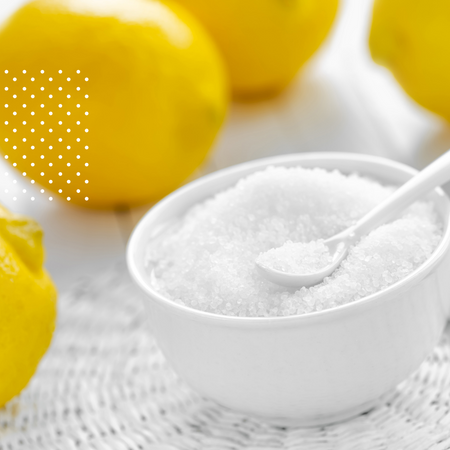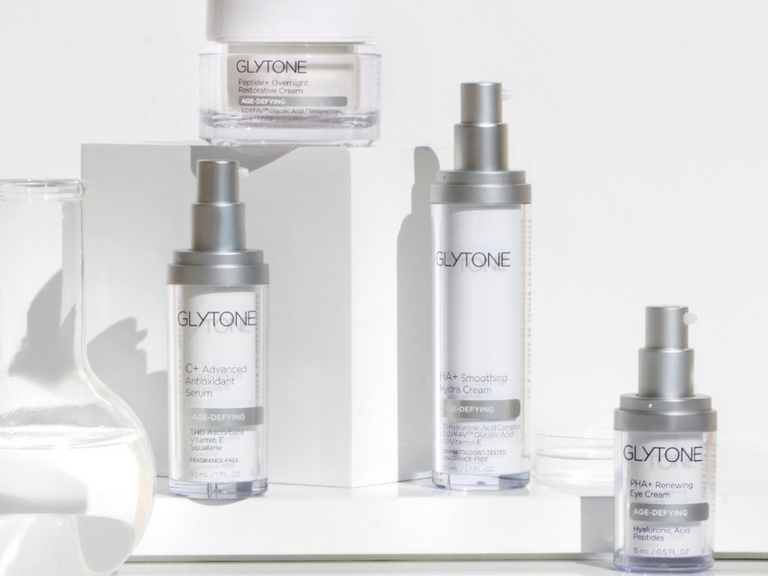You may have heard about glycolic acid but was put off by the “acid.” Or maybe you’re searching for something to tackle dull skin, signs of ageing or acne. Glycolic acid isn’t something to be nervous of and, in fact, it can be a great addition to your skincare routine.
It can brighten the skin, clear up acne and blemishes, lighten discolouration and even reduce the look of lines and wrinkles. But what exactly is this wonder ingredient and how do you know if it’s for you? That’s where we can help.
Here at Face Dr, our team of skin experts have decades of experience helping thousands of clients get the glowing skin we all dream of. We know all too well how confusing the skincare world can be. Want free advice now? Book your online skincare consultation below, or read on.
So to help, we’ve broken down exactly what glycolic acid is, what it does and whether you should start using it. Wondering about other ingredients like mandelic acid and ceramides? We’ve covered those in depth, too.
What is glycolic acid?

First up, what exactly is glycolic acid? Glycolic acid is a type of AHA, or alpha hydroxy acid, like citric acid or lactic acid. It’s derived from sugar cane and can be found in everything from cleansers, toners, serums and peels. As it’s an acid, it works as an exfoliant on the skin, removing dead skin cells.
What does glycolic acid do for the skin?
So we know it exfoliates, but what does this actually do for the skin.The benefits of using glycolic acid include:
- Brighter skin with less dullness
- Lighter hyperpigmentation and dark spots
- Less breakouts and acne
- A younger looking complexion
- More radiance and a more dewy glow
How does glycolic acid work?
Glycolic acid can work wonders on a range of skincare concerns, but how does it actually work? Glycolic acid works as a chemical exfoliant. The acid loosens the bonds between dead skin cells on the surface of the skin that can be hard to remove. With the bonds loosened, these dead skin cells are easily sloughed off, revealing a brighter and healthier complexion underneath.Glycolic acid has smaller molecules than other AHAs, so it can easily penetrate the skin and provide more effective results. By removing dead skin cells, you remove discoloured patches, to help with hyperpigmentation, and lifeless-looking skin cells, to help with dullness and signs of ageing.
While removing dead skin cells, it also clears all of the oil and dirt that was clogging them. This results in clear blemish-free skin and helps to clear up acne, blackheads and whiteheads.
It also stimulates the production of collagen, which is one of the main proteins in our skin. With more collagen, your skin will be left firmer, plumper and younger looking. Lines and wrinkles will also look more “filled in” for an overall youth-boosting result.
How do you use glycolic acid?

Sold on the benefits? Here’s how you use the ingredient. If you’ve never used glycolic acid before, and especially if you have sensitive skin, you should start with a wash-off product. You can find glycolic acid in wash-off products like cleansers, where you can get a dose of the skin-clearing ingredient once or twice a day.
If your skin reacts well, or if you generally have skin that doesn’t irritate easily, it’s time to try leave-on products for more visible results. Look out for serums, toners and overnight glycolic acid peels that you simply apply to your skin like any other serum or toner. Peels can come in serum form or in pre-soaked pads that you swipe over the skin.
For those with more sensitive and dry skin, look out for weaker concentrations, usually 2% or 5%. Those with combination or oily skin can try 10% glycolic acid products. Stronger concentrations are available in in-clinic treatments which can provide even better results, but acids this strong must always be applied by a professional.
Is glycolic acid right for me?
Glycolic acid is generally best for those with combination or oily skin. It can be irritating for those with dry and sensitive skin, but that doesn’t mean you have to avoid it altogether. Simply start with a small amount of product just once or twice a week. You may find your skin gets used to the ingredient.Always do a patch test by swiping a small amount of the product on a discrete patch of skin, like your wrist or behind your ear. Wait about 24 hours and check for signs of irritation, redness or a rash. If it’s all clear, you shouldn’t have any adverse reactions by using the product on your face either.
Glycolic acid can be a little harsher on the skin than other ingredients, so if you’re already using strong ingredients it can lead to irritation. If you’re already using physical exfoliants, other AHAs like citric acid or lactic acid, or retinol, you may find adding glycolic acid to the mix may aggravate your skin. Be sure to speak with a skincare expert before mixing strong ingredients.
Generally glycolic acid is safe for most people. Many dermatologists agree that glycolic acid is even safe for pregnant women.
Want to get an expert opinion on which skincare ingredients work best for your unique skin needs?
Book your free video consultation with a Skin Expert
What are the side effects of glycolic acid?

Of course, every skincare ingredient out there comes with the risk of some side effects. For glycolic acid, the main side effect is irritation. Especially for those with sensitive skin, the ingredient may cause redness, soreness and itchiness. If this happens, simply wash your face which will neutralise the acid. You can also avoid the chances of irritation by doing a patch test first and starting with low concentration and a small amount of the product a few times a week.
Glycolic acid can also be drying for some people, especially if you opt for higher concentrations. Be sure to top up your skin’s moisture levels with high-quality serums and masks, and look out for hyaluronic acid and glycerin, two hydrating ingredients that can soothe and banish any dryness caused by glycolic acid.
As with other AHAs, glycolic acid can increase your skin’s sensitivity to the sun. Be sure to always wear sunscreen, even on overcast days, to minimise the risk of UV damage.
More serious side effects include acid burns and scarring. But these are extremely rare and only really occur with higher concentrations of the ingredient. Be sure to use only the amount of product that’s recommended on the packaging.
Products to try with glycolic acid

Have we sold you on the benefits of adding glycolic acid to your skincare routine? Here are some products to try to get you started:
- ZO Skin Health Exfoliation Accelerator
- Obagi Nu-Derm Exfoderm (Get in touch with hello@myfacedr.com if you’re interested in this product)
- Glytone Resurfacing Body Oil
- SkinCeuticals Glycolic Renewal Cleanser
Still have questions?

Still not sure whether glycolic acid is for you? Or maybe you’ve got some questions about other ingredients? The best place to go for answers is to a skincare expert.
Here at Face Dr, we know how daunting the skincare world can be and that’s why we offer free online consultations to help. You can book a 30-minute video consultation where you’ll speak to one of our skin experts. They can analyse your skin and talk you through whether glycolic acid is for you and how it can help your skin.
Our experts can also give you advice on products to use, how to incorporate them into a routine and answer any other questions you’ve got about skincare concerns, ingredients or products. We only ever recommend brands and products that provide real results, so you can save time and money adding effective products to your routine straight away.







